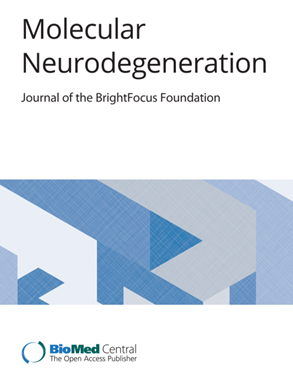Adaptive immune changes associate with clinical progression of Alzheimer’s disease
IF 14.9
1区 医学
Q1 NEUROSCIENCES
引用次数: 0
Abstract
Alzheimer’s disease (AD) is the most frequent cause of dementia. Recent evidence suggests the involvement of peripheral immune cells in the disease, but the underlying mechanisms remain unclear. We comprehensively mapped peripheral immune changes in AD patients with mild cognitive impairment (MCI) or dementia compared to controls, using cytometry by time-of-flight (CyTOF). We found an adaptive immune signature in AD, and specifically highlight the accumulation of PD1+ CD57+ CD8+ T effector memory cells re-expressing CD45RA in the MCI stage of AD. In addition, several innate and adaptive immune cell subsets correlated to cerebrospinal fluid (CSF) biomarkers of AD neuropathology and measures for cognitive decline. Intriguingly, subsets of memory T and B cells were negatively associated with CSF biomarkers for tau pathology, neurodegeneration and neuroinflammation in AD patients. Lastly, we established the influence of the APOE ε4 allele on peripheral immunity. Our findings illustrate significant peripheral immune alterations associated with both early and late clinical stages of AD, emphasizing the necessity for further investigation into how these changes influence underlying brain pathology. • Peripheral CD8+ TEMRA cells expressing markers associated with senescence accumulate in AD patients before dementia onset. • Peripheral immune cells correlate with AD biomarkers, varying by clinical AD stage. • APOE ε4 modifies peripheral immunity and its association with clinical AD measures.适应性免疫变化与阿尔茨海默病的临床进展有关
阿尔茨海默病(AD)是最常见的痴呆症病因。最近的证据表明,外周免疫细胞参与了该疾病,但其潜在机制仍不清楚。与对照组相比,我们利用飞行时间细胞计数法(CyTOF)全面绘制了轻度认知障碍(MCI)或痴呆症患者的外周免疫变化图。我们发现了 AD 中的适应性免疫特征,并特别强调了在 AD 的 MCI 阶段,重新表达 CD45RA 的 PD1+ CD57+ CD8+ T 效应记忆细胞的积累。此外,一些先天性和适应性免疫细胞亚群与AD神经病理学的脑脊液(CSF)生物标志物和认知能力下降的测量指标相关。耐人寻味的是,记忆T细胞和B细胞亚群与AD患者脑脊液中的tau病理学、神经变性和神经炎症生物标志物呈负相关。最后,我们确定了 APOE ε4 等位基因对外周免疫的影响。我们的研究结果表明,外周免疫的重大改变与 AD 早期和晚期临床阶段都有关联,强调了进一步研究这些变化如何影响潜在脑病理学的必要性。- 表达衰老相关标记的外周 CD8+ TEMRA 细胞在痴呆症患者发病前就已积累。- 外周免疫细胞与AD生物标记物相关,因AD临床分期而异。- APOE ε4改变了外周免疫及其与临床AD指标的关系。
本文章由计算机程序翻译,如有差异,请以英文原文为准。
求助全文
约1分钟内获得全文
求助全文
来源期刊

Molecular Neurodegeneration
医学-神经科学
CiteScore
23.00
自引率
4.60%
发文量
78
审稿时长
6-12 weeks
期刊介绍:
Molecular Neurodegeneration, an open-access, peer-reviewed journal, comprehensively covers neurodegeneration research at the molecular and cellular levels.
Neurodegenerative diseases, such as Alzheimer's, Parkinson's, Huntington's, and prion diseases, fall under its purview. These disorders, often linked to advanced aging and characterized by varying degrees of dementia, pose a significant public health concern with the growing aging population. Recent strides in understanding the molecular and cellular mechanisms of these neurodegenerative disorders offer valuable insights into their pathogenesis.
 求助内容:
求助内容: 应助结果提醒方式:
应助结果提醒方式:


